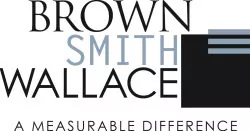The IRS has now released the draft 2016 instructions for both the "B" and "C" versions of Forms 1094 and 1095. The agency uses the forms to enforce provisions of the Affordable Care Act (ACA). It's important for employers to stay apprised of changes to these critical documents.
The B Forms
The B forms are filed by minimum essential coverage (MEC) providers to comply with requirements under Internal Revenue Code Section 6055. MEC providers are mostly insurers and government-sponsored programs, but some self-insuring employers also fall under the definition. The 2016 draft B Form instructions generally follow the final 2015 instructions, but contain important clarifications and additions. Here are some highlights:
Coverage under more than one MEC plan. The IRS continues to refine the instructions for the two filing exceptions for individuals covered by more than one MEC plan. As before, the first exception would apply where both MEC plans are provided by the same coverage provider. The draft instructions would also continue to include the example of an employer with a self-insured major medical plan and a health reimbursement arrangement (HRA).
The substance of the second exception — for "supplemental" MEC offered only to individuals also covered by other MEC for which reporting is required — also appears unchanged. However, the draft instructions are more explicit on the application of this rule to employer-sponsored MEC plans. That is, the rule applies only where both MEC plans are offered by the same employer.
The draft instructions don't directly state that the second exception applies only if eligibility for the supplemental MEC is conditioned on coverage under other MEC that must be reported. They include a cross-reference to proposed regulations under Sec. 6055 that contain this requirement. The draft instructions also specifically state the rule for when different entities are treated as a single employer for these purposes.
Taxpayer Identification Number (TIN) solicitation. The draft instructions include a cross-reference to the portions of the proposed Sec. 6055 regulations that address the obligation to solicit covered individuals' TINs.
Exchange coverage and catastrophic plans. The draft instructions note that insurers must report coverage under qualified health plans sold in the individual market through a Health Insurance Marketplace (also known as an Exchange) on Form 1095-A. However, coverage under group policies sold through a Small Business Health Options Program must be reported on Form 1095-B.
Insurers are encouraged, but not required, to report 2016 coverage under catastrophic health plans on Form 1095-B. (Under the proposed Sec. 6055 regulations, insurers would have to begin reporting coverage under a catastrophic plan starting with 2017 coverage.)
Excepted benefits. The draft instructions emphasize that excepted benefits (such as limited-scope dental and vision benefits) aren't MEC and shouldn't be reported.
Paper or electronic filing. The draft instructions add an example to illustrate that coverage providers required to file electronically (in other words, they filed 250 or more Forms 1095-B) may file corrected forms on paper so long as they're correcting fewer than 250 forms. Filers are reminded that the formatting directions in the draft instructions are for preparation of paper returns.
When filing forms electronically, the formatting set forth in separate schemas and business rules must be followed. Shortly after release of the draft instructions, the IRS announced availability of schemas and business rules for tax year 2016.
The C Forms
The C forms are filed by applicable large employers (ALEs). Like the B Forms, the new draft C Form instructions generally follow the final 2015 instructions, with a number of important clarifications and additions. Here are some highlights:
Aggregated ALE groups. The draft instructions contain an expanded discussion (including more examples) for filings made by ALE members that are part of an aggregated ALE group (in other words, employers in a controlled group or affiliated service group). The IRS specifically reminds filers that each ALE member must file its own Form 1094-C (and associated 1095-Cs) under its own separate employer identification number. No authoritative transmittal should be filed for an aggregated ALE group.
In addition, a helpful example (along with the applicable codes) has been added to illustrate the rule that, for a full-time employee who works for more than one ALE member of the same aggregated ALE group in any calendar month, only the ALE member for whom the employee worked the greatest number of hours of service reports for the employee for that calendar month.
Multiemployer plan relief extended for 2016. The draft instructions extend the existing interim relief for multiemployer plans for another year. This means employers qualifying for the relief won't need to obtain eligibility and offer information from multiemployer plans for 2016 filings. The instructions state that this approach may change for 2017 and later years.
New codes for conditional offers of spousal coverage. The draft instructions explain the addition of two new codes available to reflect conditional offers of coverage to an employee's spouse. A conditional offer is an offer of coverage that's subject to one or more reasonable, objective conditions. For example, an offer is made to cover an employee's spouse only if the spouse isn't eligible for coverage under a group health plan sponsored by another employer.
Conditions attached to an offer may impact the spouse's eligibility for a premium tax credit. (For 2015 reporting, all offers to an employee's spouse were reported the same, regardless of whether the offer was subject to a condition.)
COBRA and other postemployment coverage. The draft instructions address a couple of important points regarding COBRA coverage by clarifying:
- How to report for the month in which an employee terminates with an ALE member
- That an ALE member is treated as having made an offer to the employee's dependents for an entire plan year if the member provided the employee an effective opportunity to enroll dependents at least once for the plan year (as required under the ACA) — even if the employee declined to enroll the dependents in the coverage and, as a result, the dependents didn't receive an offer of COBRA coverage
The draft instructions also explain that an offer of postemployment (non-COBRA) coverage to a former employee (or the employee's spouse or dependents) that would be effective after the employee has terminated employment (for example, at retirement) shouldn't be reported as an offer of coverage on Form 1095-C.
Definitions. A new definition is included for "Employee Required Contribution." It notes that additional rules apply when an ALE member makes certain employer contributions or payments, including HRA contributions and opt-out payments.
The definition of "full-time employee" clarifies that the full-time employment determination for purposes of filing the C Forms must be made based on Sec. 4980H (also known as the "play or pay" provision) and other related ACA regulations. In addition, the revised definition stresses that an ALE member is required to report complete information for all 12 months for any employee who was a full-time employee for one or more months out of the year (for instance, a midyear hire).
Expiration of certain 2015 transitional relief. Several forms of transitional relief under the play-or-pay provision Sec. 4980H were limited to the 2015 calendar year. For example, the qualifying offer method transition relief while others applied for the 2015 plan year. The draft instructions include information on only those forms of transitional relief that continue to apply to calendar months in 2016 for qualifying non–calendar-year plans.
Study Up
Employers should be advised that the "good faith" penalty relief for incorrect or incomplete returns or statements will no longer be available, because it was limited to filings made in 2016 (reporting 2015 information). So, whether you're a self-insured employer that must file the B Forms or an ALE subject to the C Forms, make sure you study up on the changes with the understanding that there may be further modifications once these instructions are finalized.
If you have questions about Form 1094 or 1095, please contact Ron Present, Partner and Health Care Industry Group Leader, at rpresent@bswllc.com or 314.983.1358.
The content of this article is intended to provide a general guide to the subject matter. Specialist advice should be sought about your specific circumstances.

